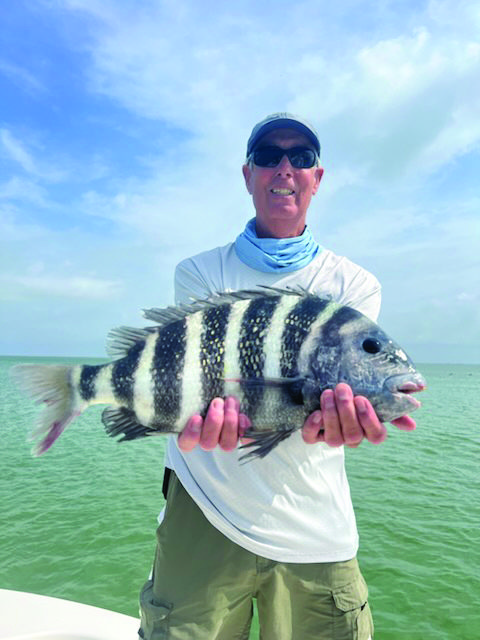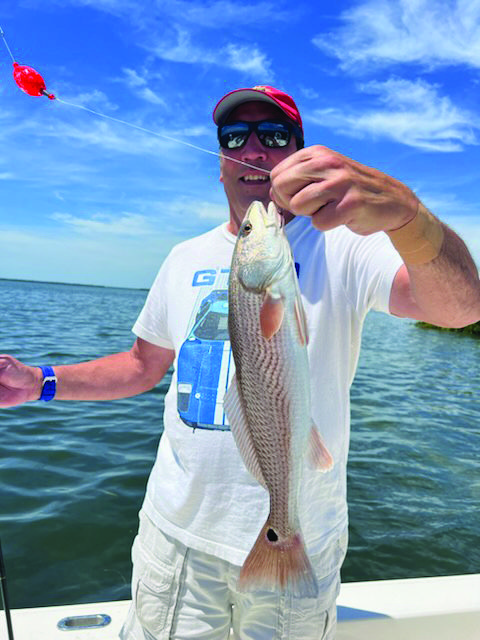By: Captain Terry Fisher
I always look forward to the month of June for fishing and boating as windy weather has virtually played out. Less winds supported by good, strong tides, afford opportunity that previous months did not offer, especially offshore. June is the beginning of summer and mornings are much more pleasant than fishing in the mid to late afternoons. Nonetheless, if higher tides are better suited for your target species, I recommend you ‘grin and bear it’, as they will bite. July and August summer heat, which are usually more brutal, however, will put down the fish in the afternoon to evening times.



The best news is that the higher and stronger tides will provide opportunity for fishing the back country areas that hold bigger redfish, snook and mangrove snapper as they seek out these areas for protection and easy access to food around the oyster bars and mangrove roots, more so than during the winter months, when water levels are low.
Long story short; the fish have more places to gather for eating and spawning. However, I suggest fishing the mangroves on the last half of an incoming tide and before the water levels get so high that the fish are able to retreat beyond any reasonable presentation be it live, dead or artificial. This type of circumstance will more often than not, require the use of a ‘chum bat’ to lure the fish that have taken temporary refuge deep into the mangroves, to take a chance and venture out to eat. Chumming pilchards, small pinfish or shrimps will usually do the trick.
In conjunction with this, I prefer to fish the windward side of the islands, oyster bars and other structures. This is the easiest and most productive way to fish, just to mention that it makes casting much less tentative against the wind. I prefer a soft, southerly wind for best results.
Migrating tarpon will be here for most of the month. They will be in the passes, along the beaches and in the bay areas. The secret to catching these are to offer what they are eating (‘matching the hatch’) be it crabs, ladyfish, catfish fillets, pinfish, threadfins, etc. any of which can be fished under a cork or on the bottom, with or without weights.
June is also the month that the redfish action picks up and gets better as time goes by throughout October. The action has been good from Punta Rassa to Charlotte Harbor. I like to fish remote areas in Matlacha Pass, both north and south of the draw bridge as well as the ‘back country’ spoil islands on the west side of Pine Island, between the outer islands of N. Captiva and Cayo Costa during June and throughout the summer. I launch my 26ft. Pathfinder from Pineland Marina in Bokeelia. Regardless of which inshore species one is targeting (except Snook) shrimps are the bait of choice for me. Pilchards for snook and threadfin for tarpon. Most of my clients want to catch lots of fish and live bait performs much better than artificial. Two basic presentations are bait on the bottom of the seabed or suspended under a popping cork.
Offshore species such as grunts, porgies, snapper and grouper, permit, cobia will provide good action. The last six months or so has played havoc on offshore fishing, not to mention inshore fishing as well, due to the windy conditions but hopefully, this month will have less windy days to get offshore. The further offshore one goes, the bigger the fish when it comes to the reef species. A minimum of 85 foot of water which equates to about 35 to 40 miles out depending on the launch location.
This is Captain Terry Fisher of Fish Face Charters. Call me direct at 239-357-6829 to book a charter on my vessel or as Captain for Hire (by the hour) on yours inshore and offshore. I am also easily contacted at fishfacecharters@yahoo.com or check out my website at www.fishfacecharters.com.
